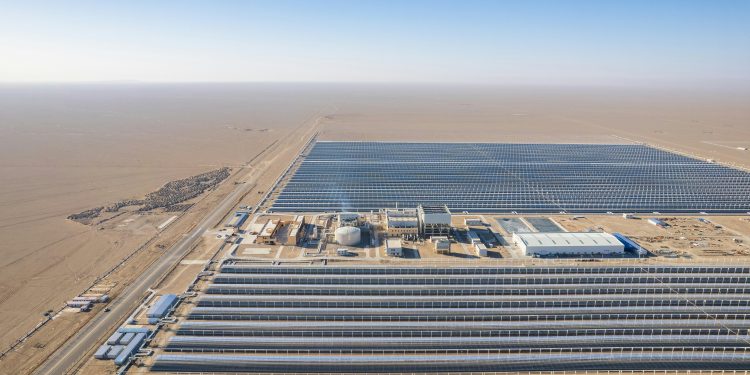In the quest for a sustainable future, the solar industry has emerged as a beacon of hope, promising clean energy and a reduction in carbon footprints. However, beneath the gleaming panels that capture sunlight lies a complex web of materials and dependencies that few consider. At the heart of this technological marvel is an intricate reliance on rare earth elements—an often overlooked aspect that poses both opportunities and challenges. As solar energy propels us toward a greener horizon, it simultaneously raises critical questions about our dependence on these scarce resources. Is the solar industry’s appetite for rare earth materials setting us on a path of overreliance, or is it a necessary step toward a sustainable tomorrow? This article delves into the intricate balance between innovation and dependency, exploring the potential implications of our growing need for these elusive elements in the pursuit of solar supremacy.
Rare Earth Reliance in Solar Tech: A Double-Edged Sword
The solar industry’s pursuit of sustainable energy solutions has brought rare earth materials into the spotlight, creating a paradox of dependence and innovation. These materials, essential for the production of high-efficiency photovoltaic cells, have become a cornerstone of modern solar technology. Rare earth elements like neodymium, europium, and terbium enhance the performance of solar panels, allowing for greater energy capture and conversion. Yet, their scarcity poses significant challenges. While they promise a cleaner future, the extraction and supply chain issues tied to these elements may inadvertently bind the industry to geopolitical tensions and environmental concerns.
As solar technology advances, the demand for rare earths grows, leading to a few critical considerations:
- Environmental Impact: Mining and refining processes can lead to substantial ecological degradation.
- Supply Chain Vulnerability: The concentration of rare earth production in certain regions creates potential for supply disruptions.
- Economic Risks: Price volatility and resource scarcity could inflate costs, affecting solar technology’s accessibility and affordability.
Balancing the benefits of rare earths with their limitations is crucial. The solar industry’s challenge lies in innovating to reduce reliance on these materials while continuing to harness their unique properties for a sustainable energy future.

Navigating the Supply Chain: Challenges and Opportunities
As the solar industry continues to expand, it faces significant challenges related to the sourcing and availability of rare earth materials. These elements, essential for the production of solar panels and related technologies, are predominantly mined in a limited number of countries, leading to concerns about supply chain vulnerabilities and geopolitical tensions. The dependency on these materials has sparked a dialogue around the sustainability and security of the solar industry’s supply chain.
On the flip side, the industry’s reliance on rare earth materials presents several opportunities for innovation and diversification. Companies are exploring alternatives, such as:
- Investing in research to develop synthetic or less resource-intensive materials.
- Enhancing recycling technologies to recover and reuse existing rare earth elements.
- Establishing new supply chains by tapping into underexplored regions or developing local sources.
By addressing these challenges proactively, the solar industry can not only secure its future growth but also contribute to a more sustainable and resilient global energy landscape.

Innovative Alternatives: Pioneering a Path to Sustainable Solar
The solar industry stands at a crossroads, grappling with the challenge of balancing technological advancement and environmental sustainability. While solar panels are celebrated for their ability to harness the sun’s energy, the reliance on rare earth materials in their production raises pressing concerns. These elements, though critical for the efficiency and longevity of photovoltaic systems, are finite resources. Their extraction often involves environmentally detrimental processes, prompting innovators to seek out sustainable alternatives.
Amidst this conundrum, groundbreaking alternatives are emerging, promising to reshape the future of solar technology. Consider the following innovations:
- Perovskite solar cells: Offering high efficiency with less reliance on scarce materials, these cells are gaining attention for their potential to revolutionize solar energy.
- Organic photovoltaics: These flexible, lightweight cells use organic molecules, presenting a less resource-intensive alternative to traditional solar panels.
- Recycling initiatives: Efforts to recycle and repurpose rare earth elements from old electronics are gaining momentum, reducing the need for new mining operations.
These innovative solutions not only address material scarcity but also pave the way for a more sustainable solar industry, ensuring that the shift towards renewable energy is as green as its promise.

Strategic Policy Recommendations for a Balanced Future
To address the potential overdependence on rare earth materials in the solar industry, several strategic policy measures can be considered. Governments and industry stakeholders should work collaboratively to diversify the supply chain by exploring alternative materials and investing in innovative technologies. This could involve funding research into substitute materials that can perform similar functions without relying on scarce resources. Additionally, fostering a circular economy by enhancing recycling and reuse processes for solar panels and components can mitigate the pressure on rare earth supply.
Furthermore, international cooperation is crucial to ensure a sustainable and balanced approach. By establishing global partnerships and frameworks, countries can share resources, expertise, and best practices to create a more resilient supply chain. Encouraging transparency and ethical sourcing in the procurement of these materials can also play a pivotal role in reducing geopolitical tensions and environmental impacts. These strategic policy recommendations aim to foster a solar industry that is not only efficient but also sustainable, ensuring a balanced future for all stakeholders involved.
Final Thoughts
As we draw the curtains on our exploration of the solar industry’s entanglement with rare earth materials, it becomes clear that this relationship is as complex as the materials themselves. The sun’s promise of a cleaner, greener future is both a beacon of hope and a challenge wrapped in layers of economic, environmental, and geopolitical intricacies. The dance between innovation and sustainability continues, urging us to strike a balance between harnessing the sun’s power and preserving the earth’s treasures. As we stand at this pivotal juncture, the choices we make today will illuminate the path for generations to come. The sun’s journey across the sky remains constant, but our journey with it is ever-evolving. Let us tread wisely, with both eyes set on a horizon that promises light for all, without leaving shadows behind.

































